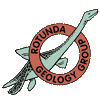Spring Programme - 3 March 2022
Microfossils and applied high-resolution stratigraphy
Tim Burnhill
Stratigraphic markers have been used by industrial geologists as correlative and predictive tools since the days of William Smith, and probably (in some form) during much earlier times. Microfossils, because of their size and abundance, can be used in place of conventional palaeontological markers (such as ammonites) when sediment samples are too small or do not yield index taxa. Many industrial operations also require higher stratigraphic resolution than can be provided by conventional stratigraphic tools (lithostratigraphy, chronostratigraphy, seismic stratigraphy). In these cases, a practical stratigraphic framework may be developed using all available geological information including not only microfossils, but also other rock properties such as local lithological markers, rock mechanics, petrophysics and chemostratigraphy.
In this talk, Tim will review the industrial application of stratigraphy, especially microfossils, using the development of the Buchan oilfield in the UK North Sea as an illustration.
Biography
Tim Burnhill graduated with an MSc in Micropalaeontology from University College, London. He holds a doctorate from Aberdeen University based on research into the stratigraphy and micropalaeontology of the Mid Cretaceous of the Central North Sea, UKCS. In 1974, Tim joined BP as micropalaeontologist at their research centre in Sunbury-on-Thames before being posted to BP’s stratigraphic laboratory in Dyce, Aberdeen. He has 40 years’ industry experience as a petroleum geologist, technical manager, and asset manager. During his career he has lived and worked in the UK, the Netherlands, Oman, Lao PDR, Vietnam, and Thailand.
